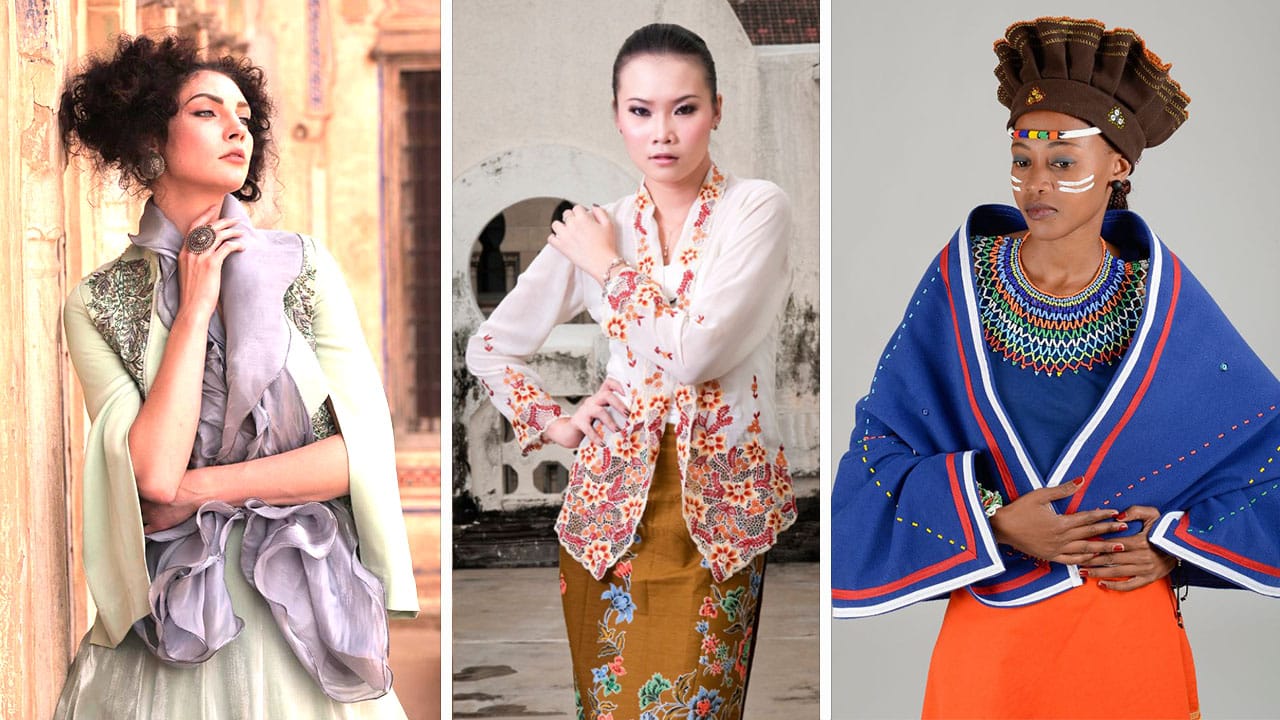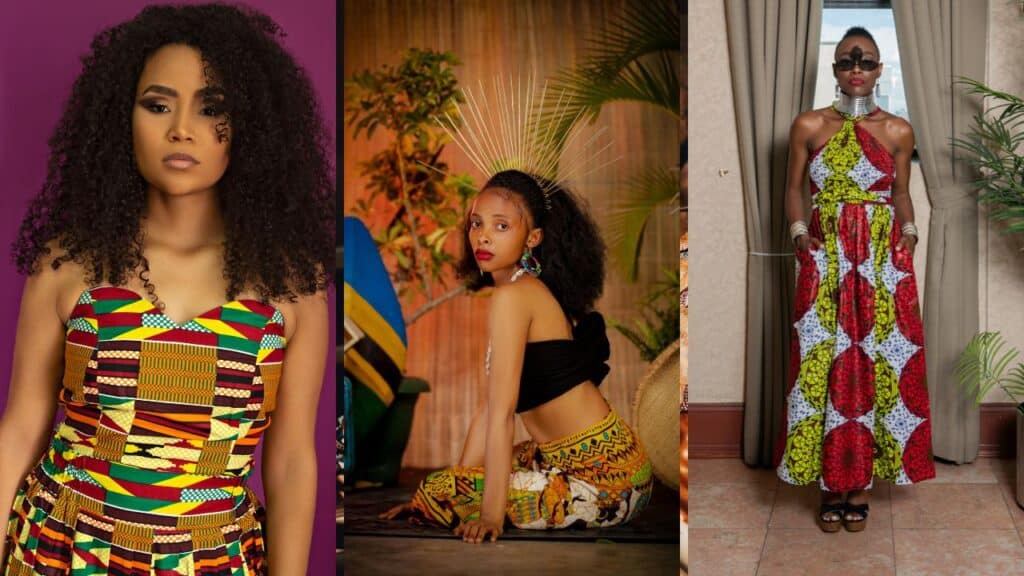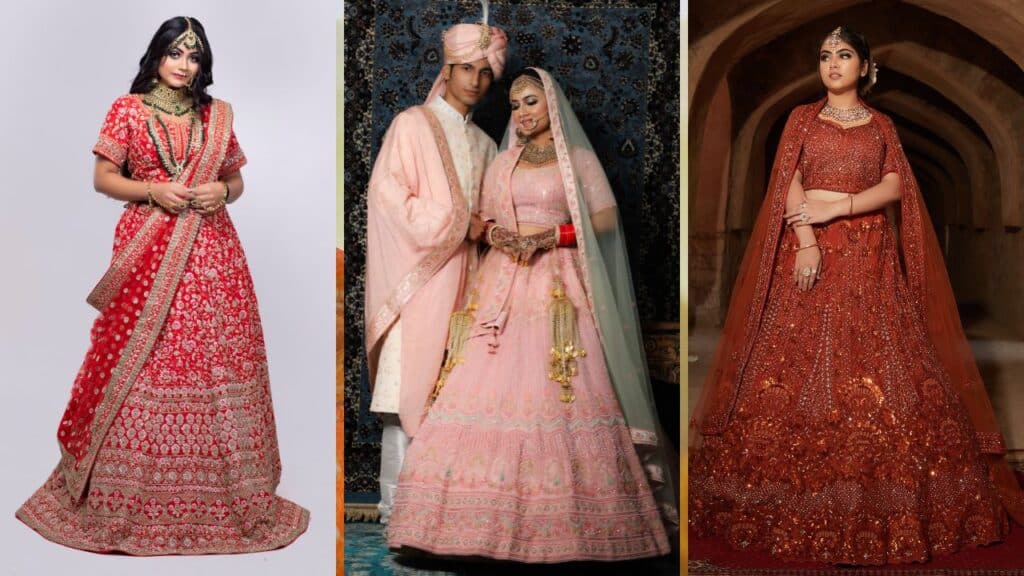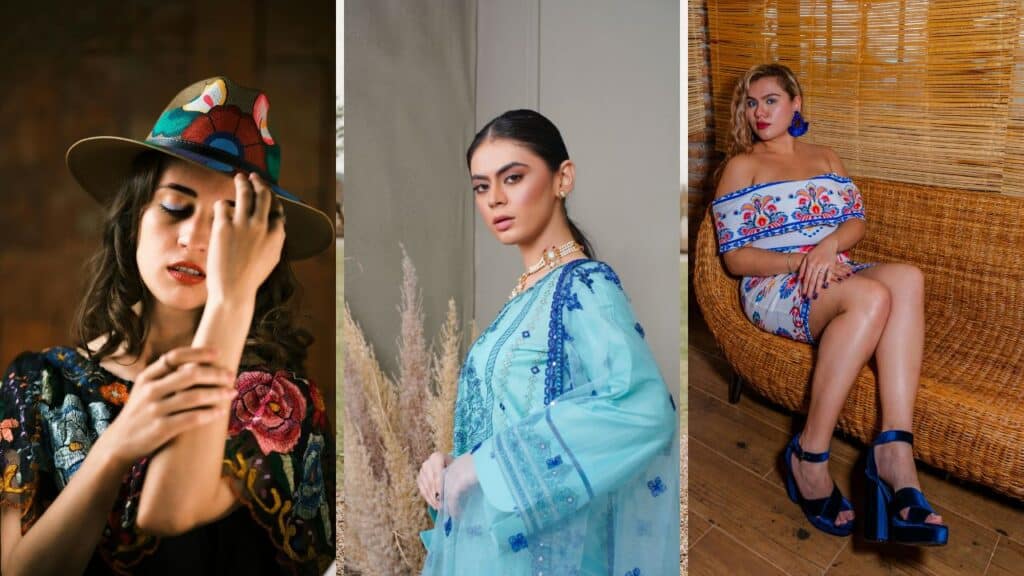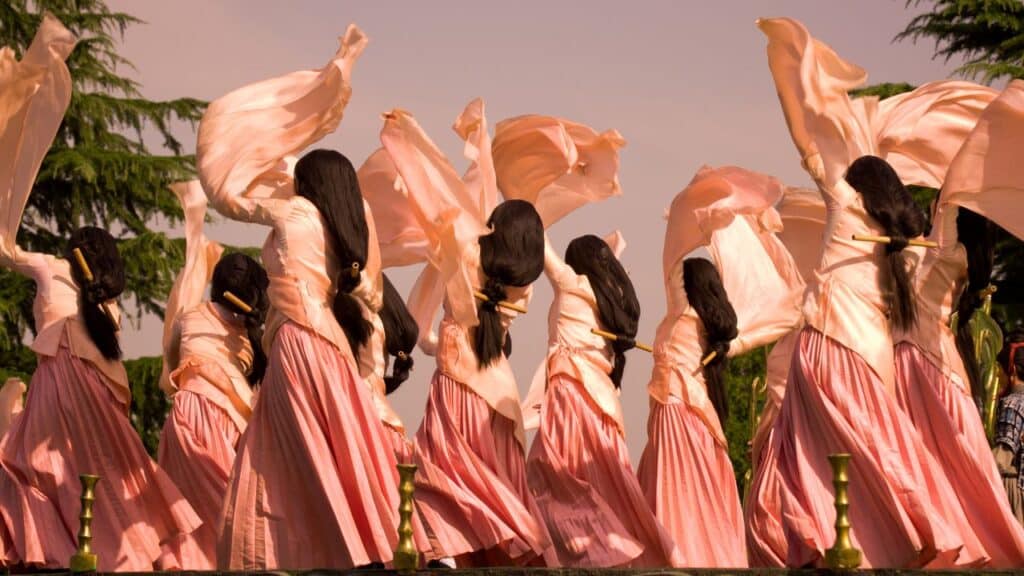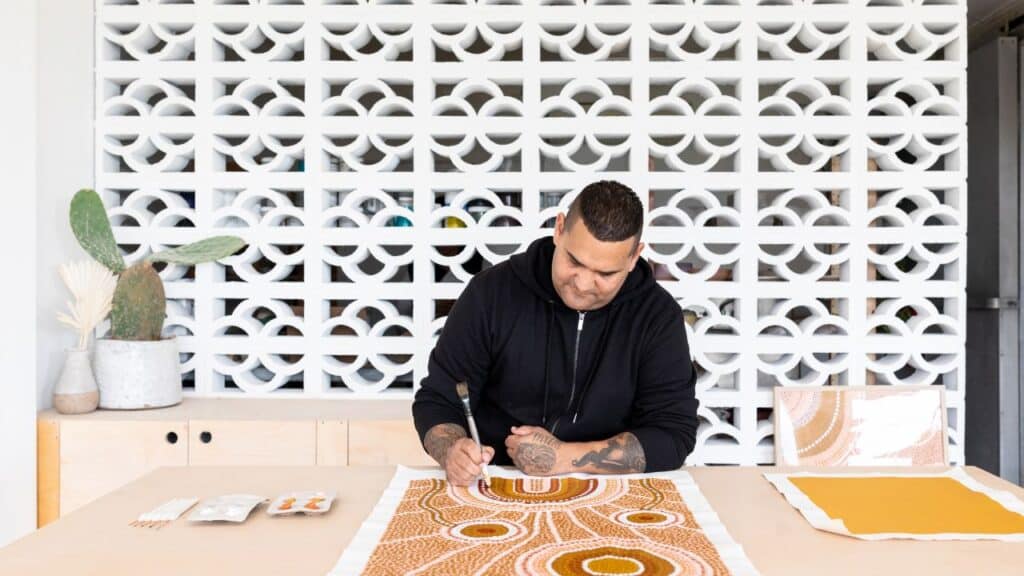The global fashion landscape has always drawn inspiration from cultural influences, celebrating diversity and the unique elements that make each culture distinctive.
In recent years, this trend has become more pronounced, with fashion houses and designers embracing traditional patterns, ethical practices, and cultural heritage. These trends do more than introduce new aesthetics—they foster a deeper appreciation of cultural narratives, bring sustainability to the forefront, and challenge the industry’s pace.
This article will explore 10 prominent cultural fashion trends currently making waves on runways worldwide. Each trend represents a rich history and unique set of values, seamlessly woven into modern designs that resonate globally.
1. African Prints and Patterns
African prints, especially those featuring vibrant colors and bold geometric patterns, have taken the global fashion stage by storm. These textiles, including kente cloth, Ankara, and mud cloth, are widely celebrated for their rich cultural symbolism and expressive color palettes. They’re often used in modern cuts and silhouettes, merging African heritage with contemporary designs.
- Symbolism: African prints often carry meaning, with colors and patterns representing different tribes, social statuses, or personal stories.
- Diversity of Textiles: African fashion includes a vast array of textiles, from the wax-resist dyed Ankara fabric to the woven kente cloth.
- Adoption by Global Designers: Designers like Stella McCartney and Burberry have incorporated African-inspired designs in their collections, paying homage to African artistry.
| African Print | Characteristics | Symbolism |
| Kente Cloth | Geometric patterns, bright colors | Social status, storytelling |
| Ankara (Wax Print) | Bold and colorful designs | Celebrates African heritage |
| Mud Cloth (Bogolanfini) | Earthy tones, hand-painted patterns | Symbols of Malian traditions |
Why It’s Popular
African prints are celebrated for their vibrant, bold aesthetics and the storytelling elements woven into each design. They not only add color to global fashion but also promote a sense of cultural pride.
2. Japanese Kimono Elements
The kimono, an iconic Japanese garment, has inspired numerous high-fashion designs, from structured silhouettes to luxurious silk fabrics. Modern adaptations of the kimono are visible in fashion shows worldwide, showcasing the elegance and sophistication of Japanese traditional wear.
- Unique Silhouette: The kimono’s long, straight lines create a structured look that has been adapted into jackets, dresses, and wraps.
- Intricate Patterns: Kimonos often feature elaborate embroidery or hand-painted designs, adding a unique, artisanal quality to fashion.
- Luxury Fabrics: Silk and brocade are commonly used, exuding a luxurious aesthetic that appeals to global designers.
| Kimono Element | Description |
| Obi (Sash) | Wide belt used for securing and styling |
| Wide Sleeves | Adds drama and movement to modern designs |
| Silk Fabrics | Known for durability and elegance |
Why It’s Popular
The kimono’s timeless elegance, intricate details, and adaptability make it a perfect candidate for reinvention in global fashion. Designers like John Galliano and Alexander McQueen have drawn inspiration from kimono styles, creating pieces that balance tradition with modernity.
3. Indian Embroidery and Textiles
Indian textiles and embroidery techniques, such as zardozi, kantha, and chikankari, are known for their intricate craftsmanship. Global designers have embraced these rich textiles, incorporating them into high-end fashion pieces.
- Vibrant colors and Intricate Designs: Indian textiles are often characterized by vivid colors and meticulous embroidery.
- Traditional Techniques: Techniques like block printing, embroidery, and hand-weaving create unique, one-of-a-kind fabrics.
- Global Appeal: Indian fashion items, especially sarees and lehengas, are now seen on runways and red carpets worldwide.
| Indian Textile | Technique | Characteristics |
| Zardozi Embroidery | Metallic threads in elaborate patterns | Royal, ornate |
| Kantha Stitching | Hand-sewn patterns on recycled fabrics | Textured, minimalist |
| Chikankari Embroidery | White-on-white embroidery | Elegant, intricate |
Why It’s Popular
Indian textiles are renowned for their fine craftsmanship and attention to detail, offering a unique blend of elegance and tradition. International designers have tapped into these techniques, creating pieces that blend Indian heritage with global style.
4. Middle Eastern Kaftans
The kaftan, a staple in Middle Eastern and North African wardrobes, has found its way onto runways worldwide. Known for its loose, flowing design, the kaftan is versatile, elegant, and suitable for both casual and formal wear.
- Flowing Silhouettes: The relaxed, draped fit of the kaftan is perfect for modern, laid-back aesthetics.
- Luxurious Fabrics: Many kaftans are made from luxurious fabrics like silk, velvet, and chiffon, adding a sophisticated touch to any outfit.
- Ornate Detailing: Embroidery, beadwork, and intricate patterns enhance the kaftan, making it a sought-after choice for evening wear.
| Kaftan Style | Description |
| Moroccan Kaftan | Detailed embroidery, often metallic |
| Middle Eastern Kaftan | Rich colors, loose-fitting design |
| Modern Kaftan | Minimalist, adapted for daily wear |
Why It’s Popular
The kaftan’s versatility and elegance have made it a beloved item in global fashion. Fashion houses like Valentino and Gucci have embraced the kaftan’s adaptable form, integrating it into their collections as both a comfortable and stylish option.
5. Latin American Ponchos and Serapes
Ponchos and serapes, traditional garments from Latin America, have inspired modern outerwear with their distinctive, geometric patterns and cozy designs. These garments not only add warmth but also introduce vibrant patterns and colors to fashion collections.
- Geometric Patterns: Ponchos and serapes feature bold, geometric patterns that add visual interest to outfits.
- Versatile Layering Pieces: Ponchos can be layered over various outfits, offering both style and functionality.
- Sustainable Fabric Choices: Many ponchos are made from sustainable materials like wool, appealing to eco-conscious consumers.
| Garment Type | Region of Origin | Features |
| Mexican Serape | Mexico | Colorful stripes, fringed edges |
| Andean Poncho | Andes Region | Earthy tones, geometric patterns |
Why It’s Popular
Ponchos and serapes add both warmth and style, with a design that resonates globally. Designers have embraced these garments as sustainable and versatile, making them a staple in winter fashion collections.
6. Indigenous American Beadwork and Patterns
Indigenous American fashion, particularly beadwork and woven patterns, is celebrated for its intricate craftsmanship and cultural significance. Fashion designers have begun integrating these designs, often in collaboration with Indigenous artists, to bring authenticity to the pieces.
- Symbolic Patterns: Indigenous patterns are deeply rooted in spiritual and cultural narratives, adding a meaningful layer to the fashion.
- Handcrafted Beadwork: Many Indigenous designs feature detailed beadwork, showcasing the skill and artistry of Indigenous artisans.
- Collaborative Fashion: Collaborations with Indigenous designers ensure cultural accuracy and support artisans directly.
| Beadwork Technique | Region | Characteristics |
| Plains Beadwork | Great Plains, USA | Geometric shapes, symbolic patterns |
| Southwest Navajo Weaving | Southwest USA | Bold colors, intricate weaving |
Why It’s Popular
Indigenous patterns and beadwork introduce a sense of heritage and storytelling into modern fashion. Brands like Patagonia and Pendleton have collaborated with Indigenous designers, creating pieces that honor these traditional techniques.
7. Scottish Tartans and Plaids
Scottish tartans and plaids, once symbols of clan heritage, have become iconic patterns in fashion. Designers have adopted these bold, checkered prints for everything from jackets to trousers, blending Scottish heritage with modern aesthetics.
- Clan Identification: Originally, tartans represented different Scottish clans, with unique patterns and colors.
- Adaptable Design: Tartans are versatile, appearing in casual, punk, and high-fashion contexts.
- Luxurious Fabrics: Woolen tartan fabrics are warm and durable, making them ideal for outerwear.
| Tartan Type | Clan/Region |
| Royal Stewart | Scottish Royal Family |
| Black Watch | Military and hunting attire |
Why It’s Popular
Tartans and plaids provide a recognizable, structured pattern that adds sophistication to any outfit. Designers like Vivienne Westwood and Burberry have made tartan patterns a fashion mainstay.
8. Mexican Embroidered Textiles
Mexican embroidery, especially from regions like Oaxaca, is renowned for its bright colors and floral motifs. Global designers have been increasingly incorporating these artisanal details into contemporary pieces, creating a fusion of traditional and modern aesthetics.
- Floral Motifs: Mexican embroidery often features bold floral patterns, adding color and vibrancy.
- Handcrafted Artistry: The embroidery process is labor-intensive, highlighting the skill of Mexican artisans.
- Cultural Celebrations: Mexican embroidery often celebrates cultural heritage, particularly in garments like blouses and dresses.
| Textile Type | Region | Characteristics |
| Oaxacan Embroidery | Oaxaca | Floral designs, vibrant colors |
| Puebla Embroidery | Puebla | Detailed flowers and motifs |
Why It’s Popular
The vibrant colors and intricate designs of Mexican embroidery appeal to fashion enthusiasts looking for artisanal, one-of-a-kind pieces. Designers like Carolina Herrera have featured Mexican-inspired embroidery in their collections.
9. Chinese Silk and Brocade
Chinese silk, especially brocade, is celebrated for its luxurious feel and elaborate designs. With dragon, floral, and phoenix motifs, Chinese silk fabrics bring a rich, exotic element to contemporary fashion.
- Traditional Symbolism: Chinese brocade often features symbols of luck, wealth, and power.
- Luxury Appeal: The high-quality silk adds a luxurious element, perfect for high-end fashion.
- Versatility: Designers have adapted silk fabrics for modern silhouettes, making them wearable for various occasions.
| Silk Type | Region | Characteristics |
| Chinese Brocade | Various regions in China | Intricate patterns, often floral |
| Silk Cheongsam | Worn traditionally in Shanghai | Elegant, fitted designs |
Why It’s Popular
Chinese silk and brocade add a luxurious, timeless quality to fashion, making it a popular choice for eveningwear and special occasions. Gucci and Prada have incorporated these materials into their designs, adding cultural depth.
10. Indigenous Australian Dot Paint and Prints
How Aboriginal Art is Making Its Mark on Global Fashion
Indigenous Australian dot painting and other traditional patterns have influenced global fashion, with designers embracing the symbolic and organic nature of these prints. The designs often represent stories, landscapes, and spirituality, offering a unique visual aesthetic.
- Symbolism in Patterns: Dot paintings depict Dreamtime stories, reflecting Aboriginal spirituality.
- Organic Design: The abstract, flowing nature of dot paintings translates well into modern prints.
- Collaborations with Indigenous Artists: Fashion brands often collaborate with Indigenous Australian artists, ensuring authenticity and respect.
| Pattern Type | Characteristics |
| Dot Paintings | Organic, symbolic of landscapes and stories |
| Line and Circle Patterns | Represents pathways, connections in Dreamtime |
Why It’s Popular
Indigenous Australian patterns add a deep cultural significance to fashion, making it an ethical choice that promotes cultural appreciation. Brands like Dior have collaborated with Indigenous artists, bringing these unique prints to an international audience.
Conclusion
Cultural influences continue to shape global fashion, bringing rich traditions and new perspectives to the industry. From African prints to Indigenous Australian designs, these trends are not only visually compelling but also promote diversity, ethical collaborations, and sustainability.
| Trend | Origin | Impact on Global Fashion |
| African Prints | Africa | Bold colors, storytelling through patterns |
| Japanese Kimonos | Japan | Elegant, structured designs |
| Indian Embroidery | India | Detailed craftsmanship |
| Kaftans | Middle East and North Africa | Versatile, flowing silhouettes |
| Ponchos and Serapes | Latin America | Layering and warmth |
| Indigenous Beadwork | North America | Handcrafted, symbolic patterns |
| Scottish Tartans | Scotland | Structured, recognizable patterns |
| Mexican Embroidery | Mexico | Vibrant, floral motifs |
| Chinese Silk | China | Luxurious, symbolic designs |
| Aboriginal Dot Prints | Australia | Organic, meaningful patterns |
As the fashion world continues to celebrate cultural diversity, these trends not only inspire creativity but also foster greater respect and appreciation for traditional craftsmanship.


